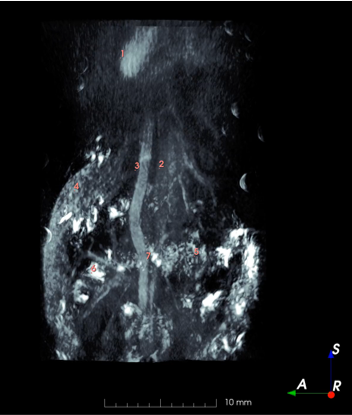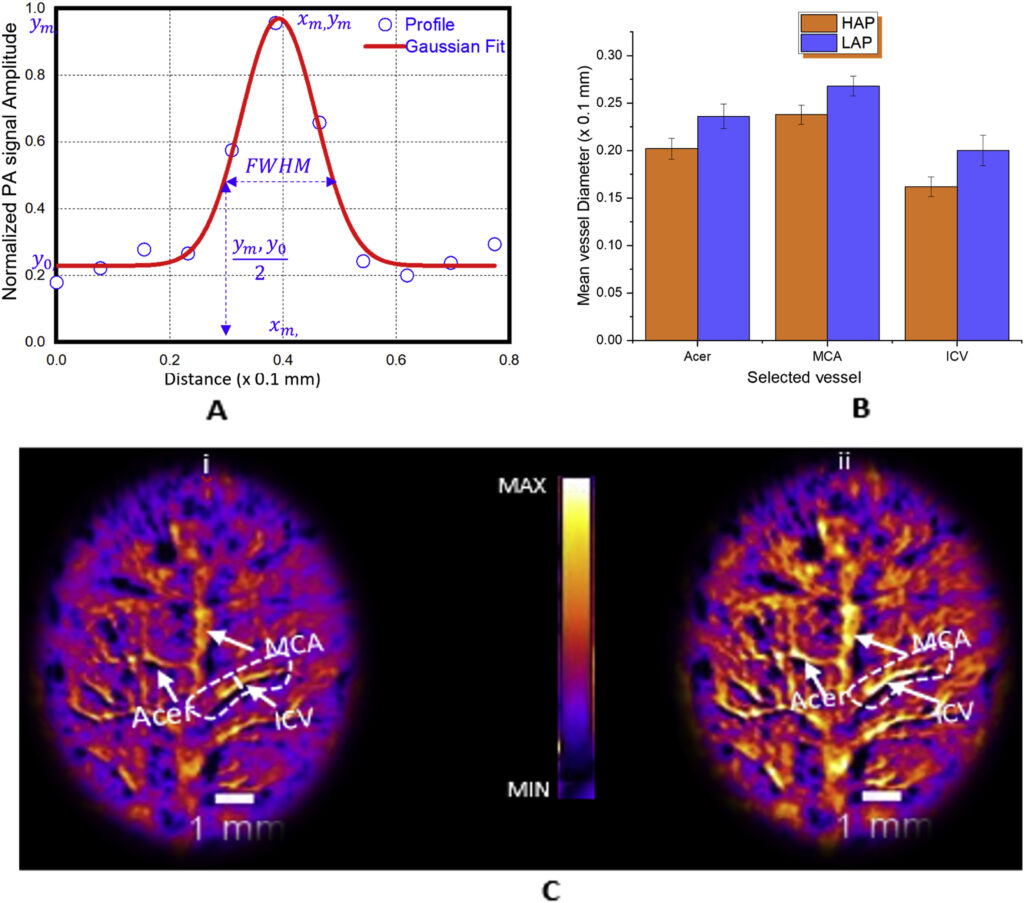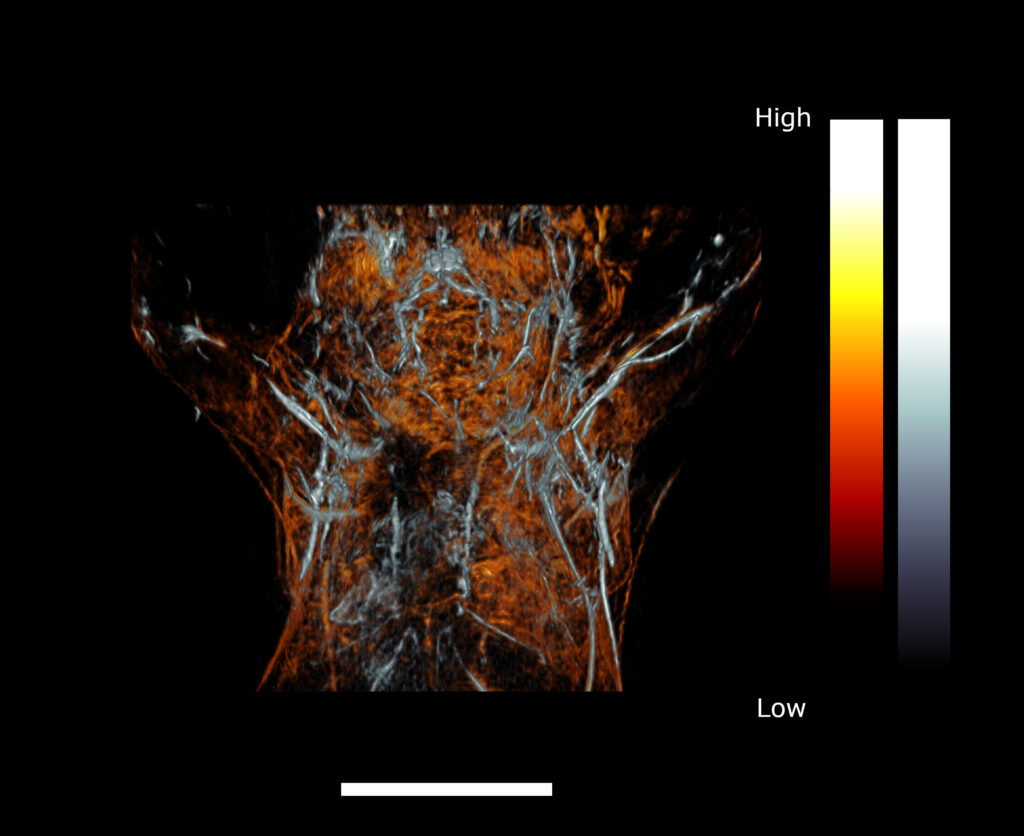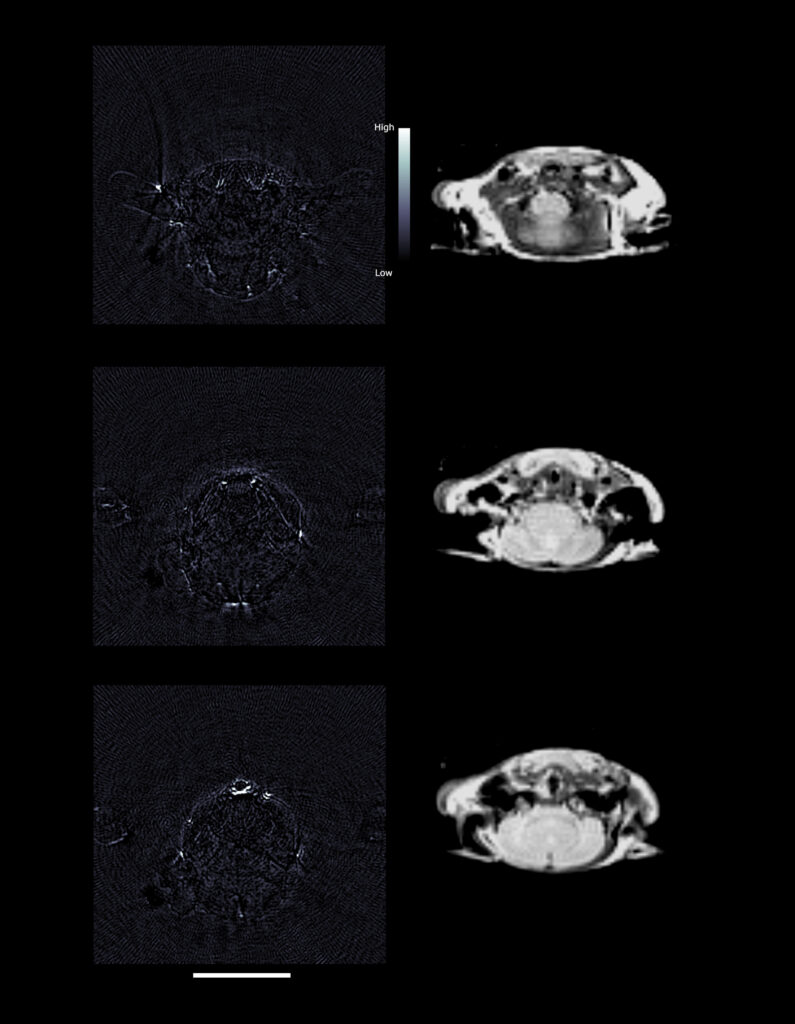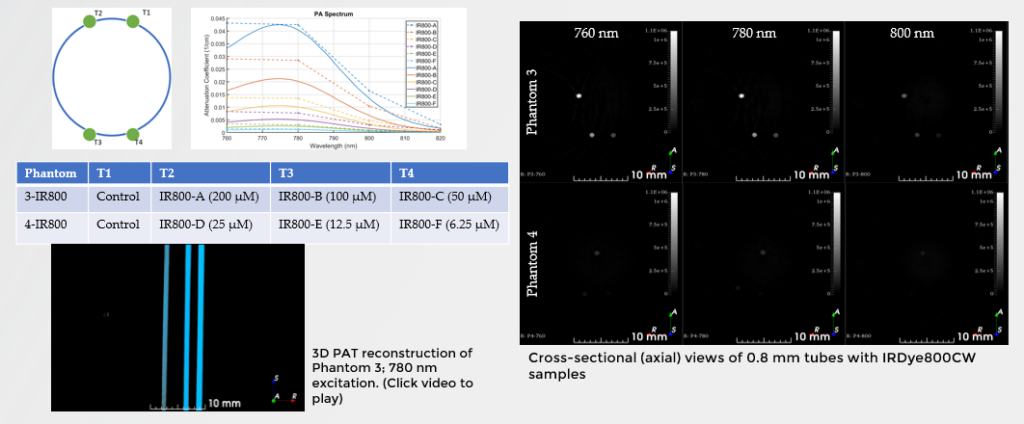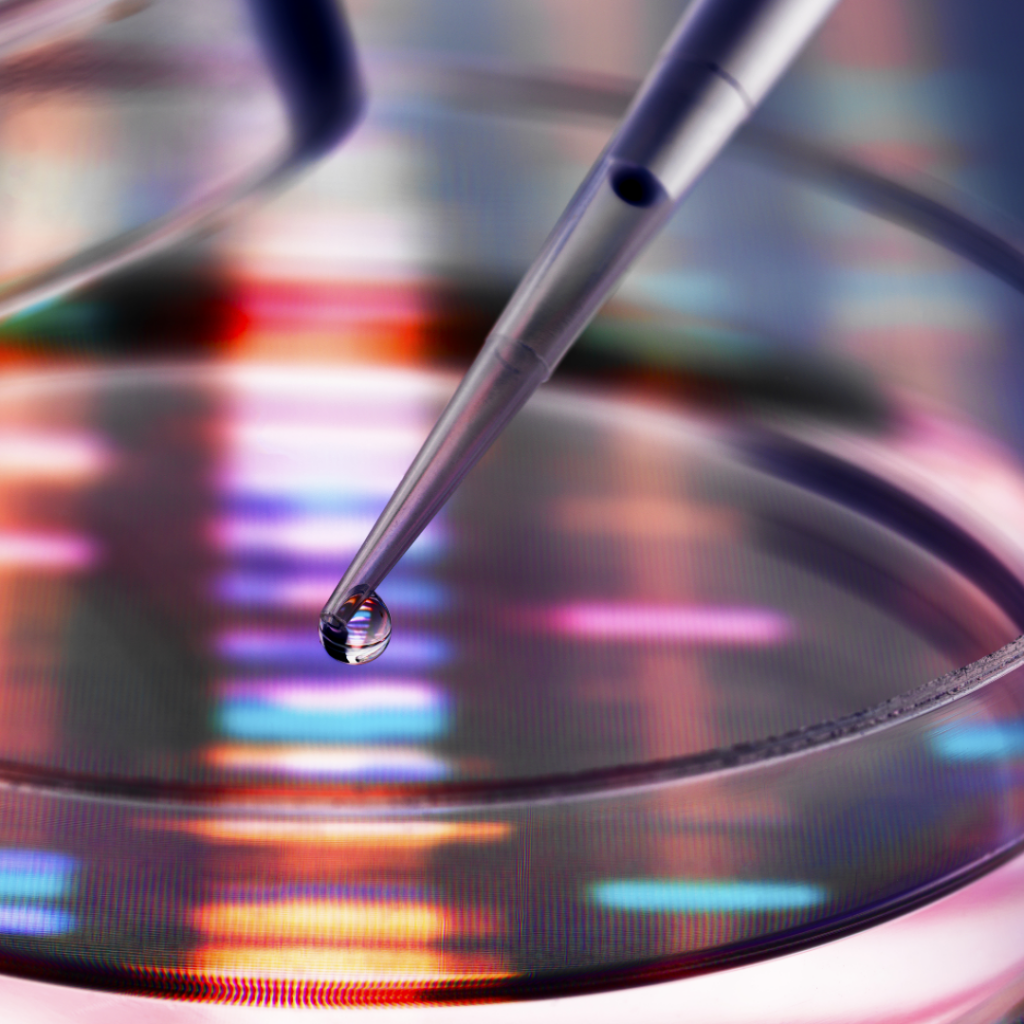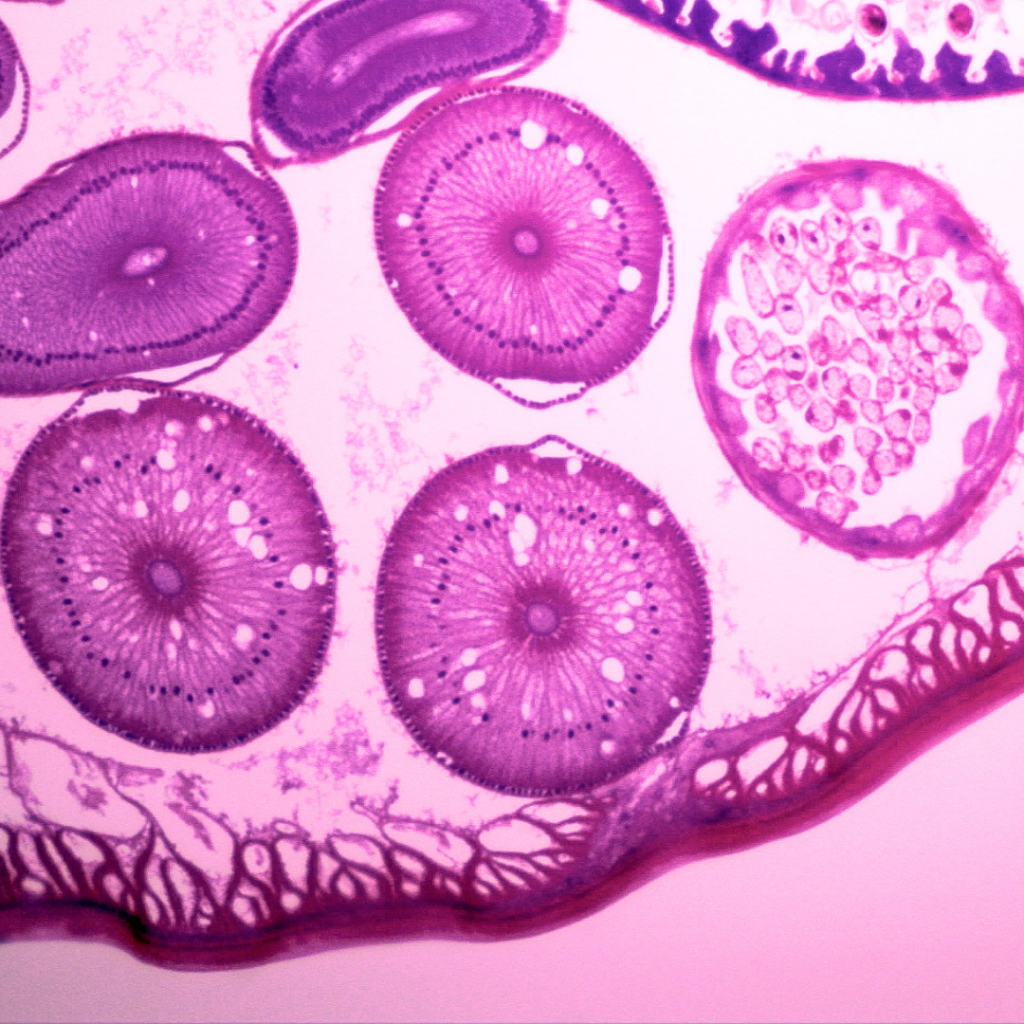Authors: Vassili Ivanov, Hans Peter Brecht, Sergey A. Ermilov
AFFILIATIONS
PhotoSound Technologies, Inc. (United States)
ABSTRACT
Large number of simultaneously acquired spatially distinct pressure signals is required to improve quality of real-time photoacoustic and x-ray acoustic biomedical images [1]. In the past this approach was limited by availability of commercial multi-channel analog-to-digital converter (ADC) systems and ability to operate multiple ADC boards with synchronized clock and trigger source. The new Legion series single-board 256-channel ADC (ADC256) was designed by PhotoSound for massive parallel data acquisition utilized in photoacoustic, laser-induced ultrasound, and X-ray acoustic real-time imaging applications. ADC256 is a 12-bit ADC with a sampling rate up to 40 MHz and a USB3 computer interface. It can run at 200 Hz frame rate with 4096 points per trigger acquired by each channel. Higher trigger rates without data loss are possible with smaller number of points per trigger. ADC256 has an integrated amplifier with programmable gain up to 51 dB. Additionally, it can be equipped with a matching photoacoustic preamplifier. The system architecture is scalable to 1024 channels using four synchronized boards with a single trigger source. The clock and the trigger can be delivered from the master ADC256 board (daisy chain) or from the clock and trigger server (star topology). The data collected by each ADC board has trigger and board stamps allowing to (a) use multiple computers for data acquisition, and (b) detection of lost data events, even if the trigger rate exceeds its maximum allowed value.
Click HERE to view publication
